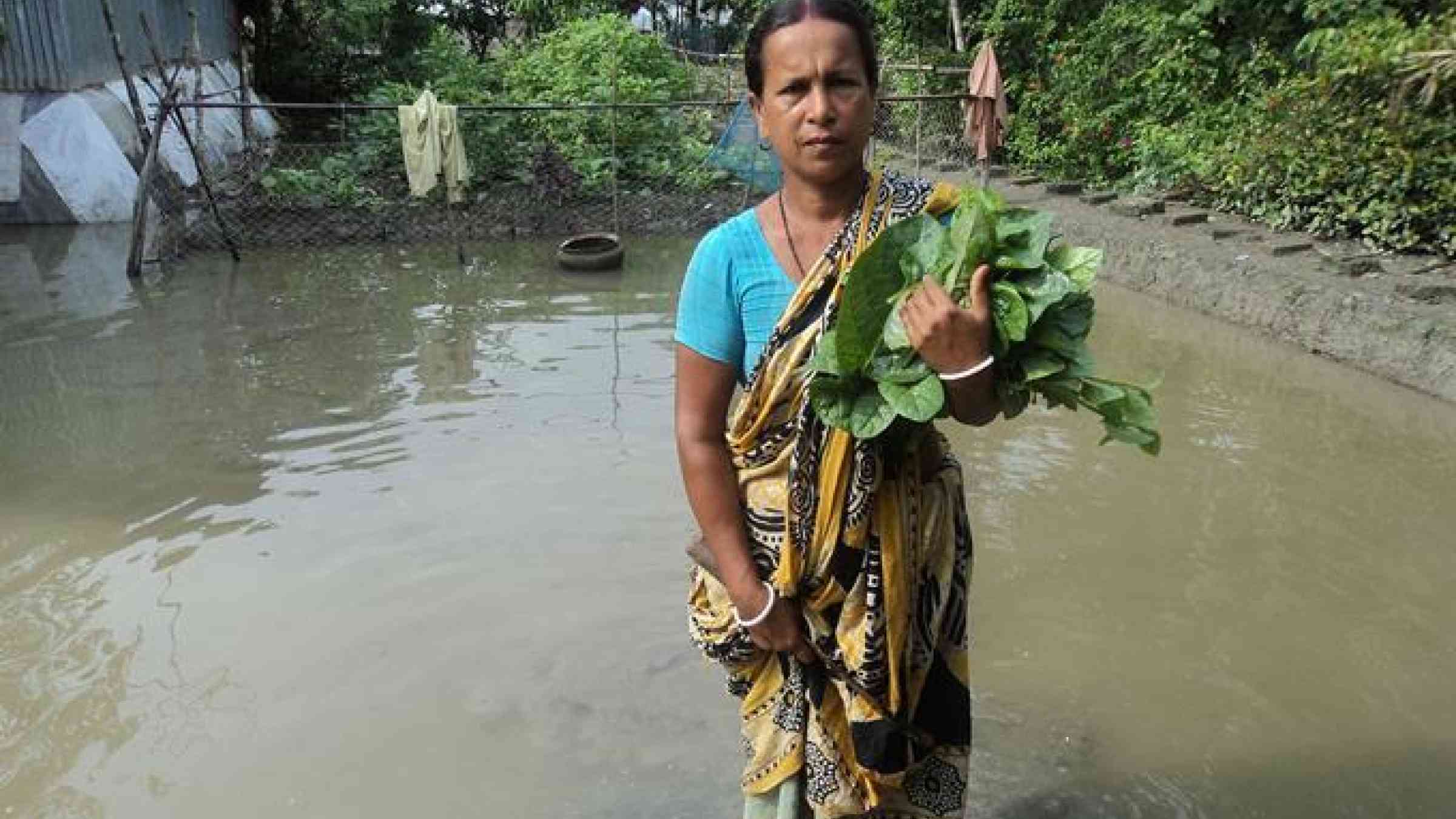Please help us improve PreventionWeb by taking this brief survey. Your input will allow us to better serve the needs of the DRR community.
Flood-prone Bangladesh plans to keep food safe in home silos

Photo by Flickr user CAFOD Photo Library CC BY-NC-ND 2.0 https://flic.kr/p/dzgAmf
By Syful Islam
With millions of Bangladeshis hit by devastating monsoon floods in the past month, the government and aid agencies are helping them with emergency food and shelter, while working to improve protection against future disasters.
By June 2019, the government will distribute half a million "household food silos" to people in areas prone to storms and flooding, to keep their food stocks safe from water and other threats.
Bangladesh's Humanitarian Coordination Task Team - made up of government and U.N. experts, aid agencies and donors - estimates that some 3.7 million people in 19 districts have been affected by the recent floods which began in mid-July.
More than 250,000 houses are reported damaged, including nearly 17,000 houses that have been washed away completely and over 65,000 partially lost to riverbank erosion.
Around 110 deaths have been reported due to drowning, most of them minors, according to government health officials.
The water has now started receding but experts expect another bout of flooding this month as rainfall has increased upstream in India and Nepal, whose rivers flow through Bangladesh to the Bay of Bengal.
Of the total number of people affected by the latest floods, around 2 million live in Jamalpur, Kurigram and Gaibandha - Bangladesh's poorest districts, where around a third of the population falls below the poverty line. These northern areas were also hit by severe flooding in September 2014.
Struggle to recover
Aid workers report that the latest floods are the most devastating of the last two to three decades.
"This flood is the worst in the last 30 years, affected people say," said Adith Shah Durjoy, disaster operations coordinator for the International Federation of Red Cross and Red Crescent Societies (IFRC) in Bangladesh.
Some poor families also suffered in the floods two years ago, he noted.
"The self-recovery capacity of these people is destroyed by repeated floods," he told the Thomson Reuters Foundation.
An assessment by the humanitarian team said the food security and livelihoods of people in affected areas had been dealt a serious blow by the recent floods.
There are acute food shortages in some areas, as household food stocks have been damaged and food production hampered.
People are eating only one or two meals a day, instead of three, and a lack of fodder for animals, especially cattle, means rural families face losing important assets.
The government is responding to immediate relief needs, alongside local and international aid agencies, Durjoy said.
The IFRC has provided food, drinking water and cash, last week releasing $245,000 to pay for the aid.
But Mahbubur Rahman, emergency response and preparedness coordinator for CARE Bangladesh, said humanitarian relief had yet to reach hundreds of thousands of people.
International charity CARE is providing food and basic shelter to more than 2,500 families in Bogra and Kurigram districts, backed by funding from the British government.
Much of Bangladesh's land is a low-lying delta plain, meaning many parts of the country regularly go under water.
Monsoon floods often inundate homes and fields, causing crop losses and damaging food stocks.
But natural disasters exacerbated by climate change are happening more often, according to Atiq Rahman, executive director of the Bangladesh Centre for Advanced Studies.
"In the northern districts, agriculture - particularly rice and vegetables - is damaged, alongside losing lives," he said of the current floods. "Disastrous events are hitting more frequently than before."
There can also be considerable climate variability across the country, he added. For example, in April the northeastern districts of Sunamganj and Sylhet saw flash floods, while Barind Tract in the northwest was suffering from drought.
Plastic posts
Experts say major cyclones and floods are causing fewer deaths than in the past, thanks to alerts and evacuations. But vulnerable households are losing their ability to cope as growing climate stresses push them deeper into poverty.
As part of a government effort to help people manage climate risks, the "household silos" will be given to coastal and river-bank dwellers so they can keep their grain dry when waters rise.
The World Bank is providing $8.37 million to procure the silos from local company Madina Polymer Industries Ltd, under the project to modernise food storage.
Made of polypropylene copolymer food-grade plastic, the silos look like earthenware pots, and can protect grain from chemical, thermal and weather effects. They are equipped with a seal that keeps the food inside dry even if the silo remains underwater for a long time during floods.
The government will also build eight large silos that can store 535,000 tonnes of grain to respond to needs during natural disasters around the country.
Explore further
Please note: Content is displayed as last posted by a PreventionWeb community member or editor. The views expressed therein are not necessarily those of UNDRR, PreventionWeb, or its sponsors. See our terms of use
Is this page useful?
Yes No Report an issue on this pageThank you. If you have 2 minutes, we would benefit from additional feedback (link opens in a new window).